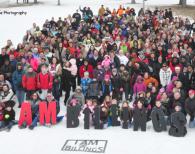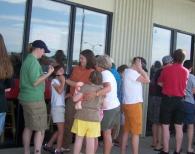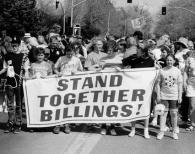'This Saturday, just two days before the federal Martin Luther King jr. holiday, the community in Billings, Mt. gathered amid freezing temperatures for the first and largest community photo.
"As we sat back and thought about events we could do to celebrate Dr. King and his spirit, we were thinking about the ‘I have a dream' speech," NIOT-Billings chair Eran Thompson told the Billings Gazette. "This is Dr. King's idea, to see the community come together, every race, religion, creed and color, just come together and be neighbors. And so we're going to take a picture."
The community photo is the first of what Thompson hopes will be an annual event. This event is part of the larger "I Am Billings" campaign, promoting diversity in this Montana town.
The community photo comes after the group's Summit on Hate in November, which brought together community leaders to discuss and seek solutions for a resurgence of hate violence. As the original Not In Our Town group, NIOT-Billings has been proactively fighting hate and building community for years, and their story continues to inspire towns across the U.S. to stand up to hate.
Billings

By Ralph Lewin, President & CEO, California Council for the Humanities
This article was originally published in the Summer 2010 issue of the California Council for the Humanities newsletter.
To read Ralph Lewin's interview with Patrice O'Neill, Not In Our Town Executive Producer and CEO, please click here.
Stories open windows into the human soul. For however brief a time, stories help us understand what it’s like to be someone else—to live, love, and dream like someone else; in this way, stories help us understand ourselves.
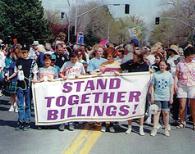
During this holiday season, we remember another Hanukkah 20 years ago in Billings, Montana. A year of racist and anti-Semitic violence came to a head one bitterly cold night when a brick was thrown through a six-year-old Jewish boy's bedroom window, where he had placed the family's Hanukkah menorah. The town rose as one to say, Not in Our Town, and a national movement was born.
That story was told in our first PBS film entitled "Not In Our Town." Hundreds of actions and campaigns followed, as our team traveled the country documenting the stories of community after community rising up against hate and prejudice with courage and persistence.
Through their actions, the people of Billings, Montana have given all of us an amazing gift. Their story has inspired others around the country to create new ways to stand together when neighbors are under attack. At Not In Our Town, we want to share these stories of hope with you through this new site. Now we are asking you to share, as well. Spread the story of Not In Our Town to your community, bring people to our website and contribute your stories of action and hope so we can all learn from each other.
More Not In Our Town Resources:
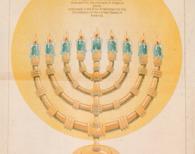
How One Mother Used the Attack Against her Family to Teach her Children Never to Hide from Hate
Q & A with Tammy Schnitzer
Editor’s Note: In the early 1990s, Tammy Schnitzer, a fourth generation Montanan, began chronicling a series of hate motivated threats and attacks against the small Jewish community in Billings, MT. A recent convert to Judaism and new congregant of Congregation Beth Aaron, Schnitzer was troubled to see how engrained the threat of hate had become in her new house of worship. She wanted to do something about it, but suddenly found her own home and family a direct target of hate. NIOT.org spoke with Schnitzer, whose story was featured in the original Not In Our Town documentary, about her experience and the impact of the community support her family received.
Photo: Tammy Schnitzer looks out the shattered window of her son's bedroom. Courtesy The Billings Gazette.
NIOT.org: What was your goal in chronicling incidents of hate against Congregation Beth Aaron?

By Jody McDevitt, a resident of Billings, Montana
In a small town in Northern Ireland, surrounded by farmland where sheep and cows graze the green hills and valleys, the story of Billings, Montana is gaining an important audience. Northern Ireland was known in the second half of the twentieth century as a place of sectarian conflict, widely called the “Troubles,” in which a Protestant majority with British political allegiances (Loyalists) clashed with a Catholic minority with an Irish cultural identity (Republicans). The peace process which was set in place in 1998 has resulted in greatly reduced violence and significantly increased prosperity for this small country–and for the first time, opened the country to migrant workers from other parts of Europe, Asia, and Africa.
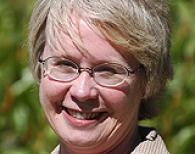
Margaret MacDonald, a leader in the Not In Our Town Movement in Billings, Montana, wrote the following letter to people in Brattleboro, Vermont who are uniting in response to incidents of racism and violence.
I have been reading with a sinking heart about the activities in Brattleboro, and my sympathies go out to the community as it struggles with hate groups cropping up among the youth of the city. Billings was in a very similar state of consternation and dismay back in 1993, when we began to organize the community to confront this phenomenon in ways that were creative, but firm.
Here is a review of some of the guiding principles that helped shape the responses, which were later recognized by the Working Group documentary “Not In Our Town.”
The first principle was that the hate speech – the graffiti, the vandalism, the flyers around town – should not be ignored simply because it came from “kids.” Of course, we did not know exactly where it came from, but many community leaders presumed it was, and also thought the best course would be to pretend it wasn’t happening.
